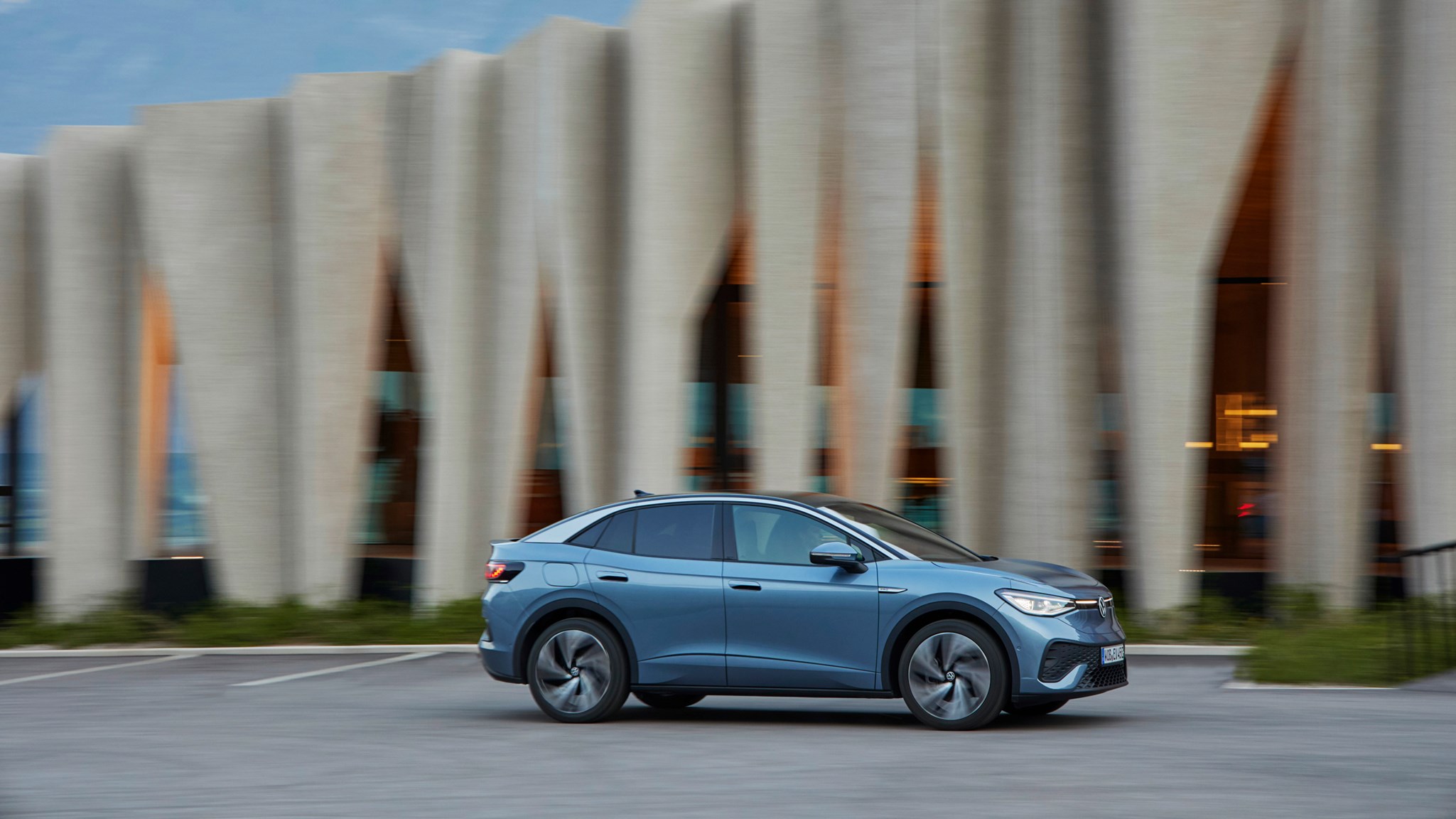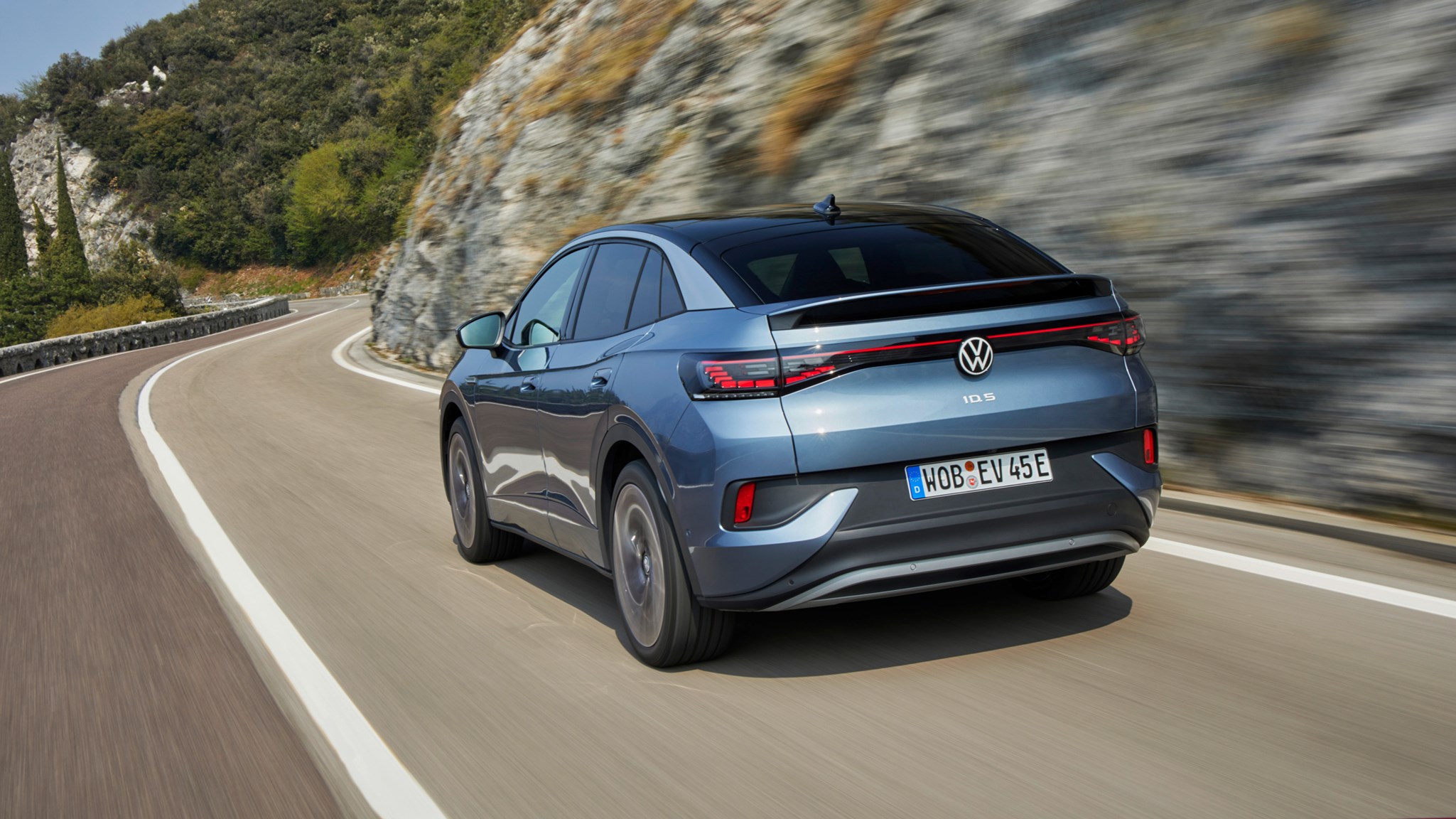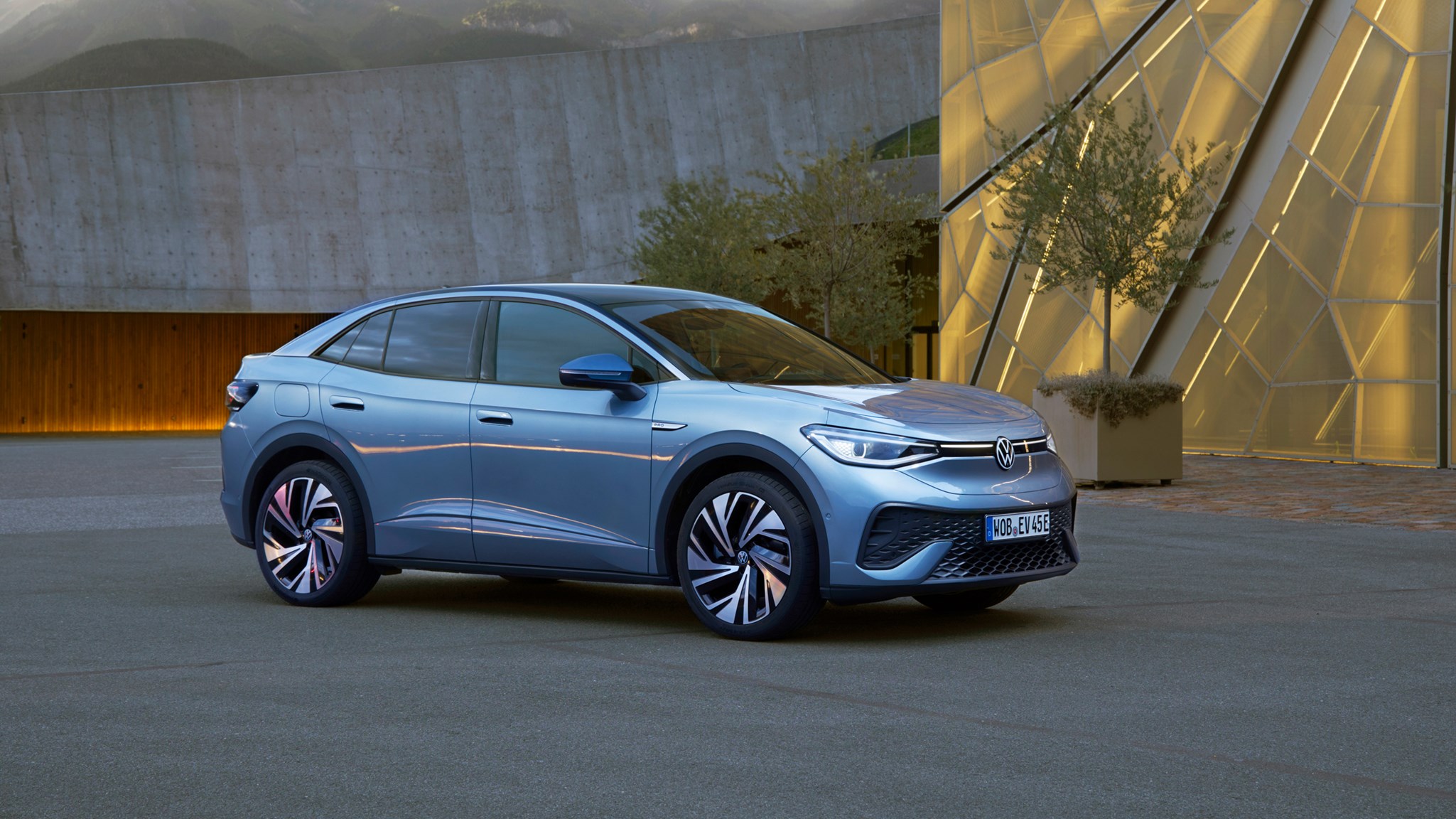► Swoopy coupe variant of ID.4 SUV
► Prices start over £50,000
► Pro Performance and GTX models tested
Like it or not, the coupe-SUV is here to stay – now that it’s penetrated the mainstream with value models like the Renault Arkana or VW Taigo.
But despite appearances, the VW ID.5 is not a bargain-basement coupe-SUV. With prices starting at more than £50,000, it’s the company’s new electric flagship – and a direct rival for other premium halo EVs such as the Volvo C40, Tesla Model Y, Ford Mustang Mach-E, Hyundai Ioniq 5 and Kia EV6.
It’s also a competitor for the likes of the Audi Q4 Sportback E-Tron and Skoda Enyaq Coupe iV, both of which share the ID.5s platform and powertrains. One would think that the flexibility of electric drivetrains would allow manufacturers to get a bit more creative with the bodies they strap on top, but it looks like swooping rooflines and jacked-up suspension are the flavour of the month, so let’s roll with it.

The more important question is whether the ID.5 is a particularly good example of the breed. Things look promising on paper, with around 300 miles of electric range, practicality figures virtually unchanged from the boxier ID.4 and attractive performance figures as you head up the range towards the hottest GTX model.
What’s under the skin?
No prizes for guessing that the ID.5 rides on VW’s scalable MEB electric architecture. In this form, it has a suitably chunky 77kWh battery and a choice of three power outputs.
The base ‘Pro’ cars get a rear-mounted motor with 172bhp and 173lb ft – good for a fairly leisurely 10.4s 0-62mph sprint. Pro Performance models have 201bhp and 229lb ft which make for a far more palatable 8.4 seconds – this is the sweet spot of the range.
The GTX gains a second electric motor on the front axle, but with 295bhp and 339lb ft it’s not exactly a rocketship. Certainly don’t expect to give the Teslarati a shock at the lights.
Range figures are nonetheless an impressive official 313 miles, 311 miles and 296 miles from the Pro, Pro Performance and GTX respectively. Once we’ve had a chance to take a longer test drive we’ll report back on how accurate those are.
Charging at speeds of up to 135kW means if you find a powerful enough charger you’ll be able to top up from 10% to 80% in around 30 minutes. A more common 7kW wallbox will be good for an overnight fill.
What’s it like to drive?

Impressively neutral, safe and comfortable – can you tell we’re trying not to say ‘boring’? It’s not particularly that anybody expected a VW SUV to drive like a 911, only that we’d hoped that a sportier-looking body and the presence of a GTX model might have indicated some nods to driver enjoyment.
There are none. Even in Sport mode, the ID.5 shows no interest in being anything but a comfortable cruiser. The steering is light, precise and natural but entirely remote from the front wheels, and while the low centre of gravity helps the VW feel planted there’s no masking the fact that this car weighs more than 2.2 tons with a driver installed.
Stop trying to treat it like an electric GTI and the ID.5 feels more at home. Though not at Tesla levels, performance is ample for a fast motorway cruise with plenty in reserve for overtaking. The slippery shape helps with wind noise, which is only a little whisper around the wing mirrors. Road noise is more significant but only noticeable thanks to the lack of an engine.
Ride comfort is excellent, meanwhile, though there’s a sense it’s bulldozing the bumps in the road rather than floating over them.
What’s the interior like?
On a car as expensive as this, disappointing. The ID.5’s interior is a near carbon-copy of the ID.4, itself pretty close to the ID.3. And the fact is, none of the three cars are a particularly lovely place to sit.
You get a clean, uncluttered dashboard with precious few physical controls – just a gear selector mounted on the instrument pod. For everything else you have a 12-inch infotainment touchscreen and a few touch-sensitive switches.

There’s a modular storage bin in the centre and two big cupholders, and that’s really where the clever stuff ends. The overriding impression is that it’s rather dark and dingy, a problem exacerbated in UK cars which so far can only be specified with monochrome interiors instead of the coloured dash tops of the vehicles pictured here.
Even with the leather dash, material quality is unimpressive, with that centre cubby in particular feeling hollow and sharp round the edges. It’s not befitting of a car of this price and lacks the sort of reassuring solidity VW’s reputation would lead you to expect.
It’s especially a shame when you consider how well this car’s rivals do things. Even the mechanically identical Skoda Enyaq makes better use of interesting materials to feel airier and more premium, while the Hyundai Ioniq 5 is a masterclass in how to preserve function while being an interesting place to sit.
Not that the ID.5’s controls are especially functional. Despite new software for the infotainment screen it’s still particularly clunky when performing certain basic functions, like switching between drive modes or adjusting the climate control.
At least it’s spacious. Rear passenger space is virtually unchanged from the ID.4 so there’s space for four adults, and the boot’s actually slightly larger in terms of litreage (measured to the parcel shelf – the sloping roofline means overall capacity is down, of course).

As for clever tech, you get a few nice touches. The augmented-reality heads-up display is a surprising addition the first time something shows up, but it works well and feels particularly futuristic. We’re not so sure about the strafing accent lighting indicating your turns on the sat-nav, but the advanced reversing assistant – that can remember a complex manoeuvre, allowing you to program your own narrow driveway or awkward parking space and allow the car to do the work hands-free – is an impressive bit of kit.
Should I buy one?
Unless you’re particularly enamoured by the way the ID.5 looks we can’t see a particularly compelling reason to choose it. The price of the higher trim levels simply doesn’t reflect this car’s dull dynamics, cheap-feeling interior or average performance.
Save some money and get an ID.4 if you really want a VW EV, but we reckon the Skoda Enyaq’s better yet, while a Kia EV6’s better to drive and just as eye-catching to look at.
It’s not that the ID.5 is a bad car, but it’s a reflection of how far the competition’s come in just a few years. Definitely test-drive the competition before you place your order.